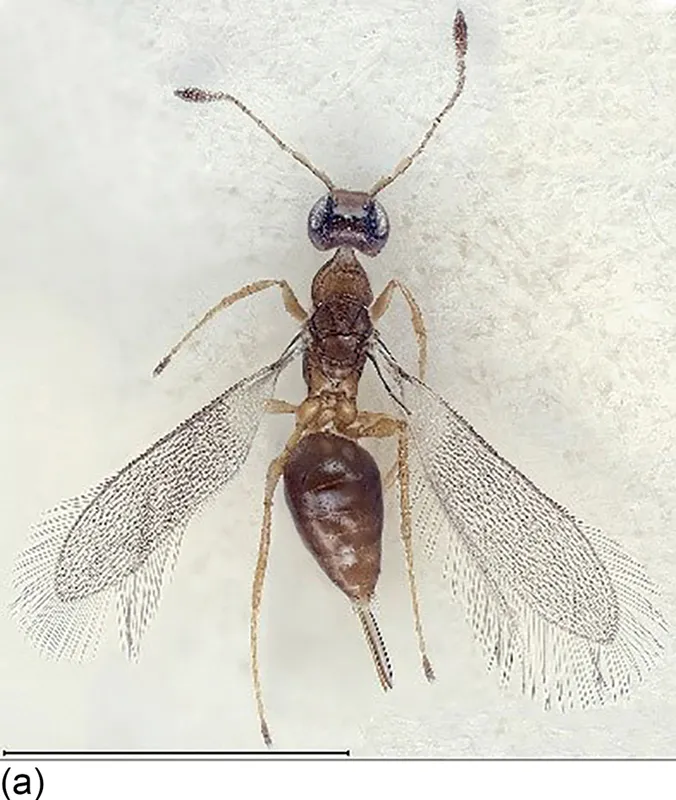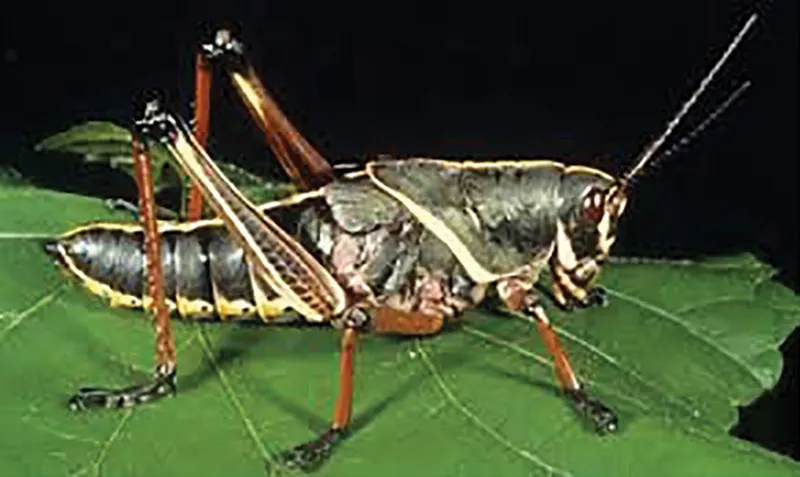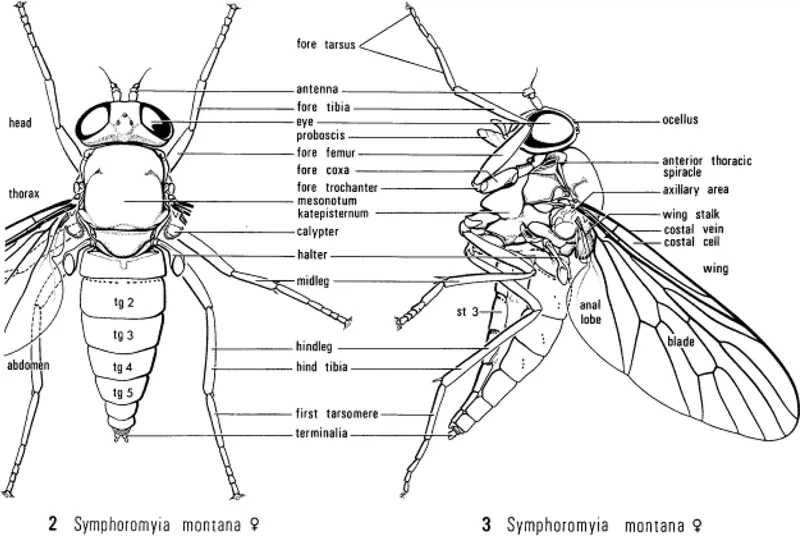Entomology is the study of those six-legged, ubiquitous organisms called insects and often includes closely related arthropods, such as mites, ticks, and spiders. This is a huge field of study and involves an entire range of biological disciplines ranging from taxonomy and physiology to genetics and evolution; the common denominator among all these different areas is that arthropods are the focus of study.
Arthropods have a variety of benefits that are both tangible and intangible. They are the most diverse and abundant group of organisms on earth. There are approximately 1.8 million described species of animals on earth, with an estimated 8.7 million species total. (Mora et al. 2011). The vast majority of these described animals, approximately one million, are insects (Stork 2018) (Figure 1.1).
Arthropods are found in just about every habitat on the planet, oftentimes partitioning that habitat into niches that they share with other species, which ultimately leads to great diversity through natural selection. Of the estimated 8.7 million described and undescribed animal species on earth, the vast majority (approximately 73%) are thought to be insects (Mora et al. 2011; Stork 2018). This diversity leads to the near universal presence in every habitat type, doing every imaginal job. Insects are the basic components of the food web, acting as primary and secondary consumers, predators, parasites, and decomposers. Insects act as pollinators—they transfer pollen from one flower to another, allowing plants to set seed and fruit. Insects produce tangible products, used by humans every day. We can thank insects for everything from honey and bees wax to dyes and pharmaceuticals. There is even a push to use insects as a food source in and of themselves.
Such extreme diversity is achieved by several factors. First, their size has allowed them to exploit a vast number of habitats not available to larger animals. Most insects are small (1 cm or less), so they have a finer grained environment. This means they can exploit very tiny habitats resulting in insects that specialize in consuming roots and leaves on flower buds (Figure 1.2a and b).
Arthropods also have a highly organized, complex neuro-motor system. In some instances, their neuro-physiological capabilities provide greater ecological plasticity enabling them to survive in changing environments. Wings are limited largely to insects and greatly facilitate dispersal which is a great advantage when resources are depleted. This ability ultimately allows for mating success and specialization.
Rapid development cycles and short generations allow for rapid evolution and quick response to changing environments and the ability to quickly exploit new niches. Metamorphosis reduces competition for resources between adults and immatures as they rely on different resources for survival. Long-term rapid development and metamorphosis during interactions with other organisms leads to coevolution. Insects and other arthropods become more diverse via bottom-up (plant defenses), top down (predators, parasitoids, and pathogens), and horizontal (competition) forces. Overall, insects have touched every aspect of our lives throughout our evolutionary history (Scudder 2009).
ARTHROPOD AND INSECT CLASSIFICATION
All arthropods have several basic characteristics in common: bilateral symmetry; segmented external appendages; an exoskeleton formed from chitin, or long-chain polymer of N-acetylglucosamine, a derivative of glucose; and external segmentation (Figure 1.3). Arthropods are broken up into several groups based on their external characteristics. Insecta is a class of Arthropoda. One can differentiate insects from all other arthropods based on the presence of three major body regions (head, thorax, and abdomen); a single pair of antennae, often modified for specialized functions; and three pairs of segmented legs (Gullan and Cranston 2009).
Several other Arthropoda classes are also studied by entomologists. These taxa include the Arachnida (spiders, scorpions, ticks, and mites), the Diplopoda (millipedes), and the Chilopoda (centipedes). Most of these groups when associated with a crime scene are incidental. Spiders, scorpions, and centipedes may be predating upon other organisms present. Millipedes and many types of mites are plant feeders, which use the scene as a general habitat. Ticks and parasitic mites may be associated with living individuals, but only briefly after death; these groups are obligate parasites and require a living organism to survive. After death, they will vacate the body very quickly. By far the most common and currently most useful group to be associated with crime scenes are predominantly within the Insecta.
Insect anatomy is the foundation of entomology. As previously mentioned, arthropods in general have evolved strategies to live successfully under a variety of conditions, and a strong understanding of external and internal anatomy of the insects involved in decomposition gives the investigator a good basis to understand insect behavior.
The overall body form of an insect is cylindrical and elongate and is broken up into three major body regions: the head, the thorax, and the abdomen. This is the overall body form of an insect, as illustrated by a grasshopper (Orthoptera: Acrididae) (Figure 1.4).
Grasshopper bodies are ancient and are therefore representative of ancestral insect forms. This makes the grasshopper an excellent comparative model.
The overall body form of the basal insect is cylindrical and elongate. It has a robust appearance, with an internal body cavity, the haemocoel, formed by the exoskeleton and filled with hemolymph or insect blood. Externally, the plan is straightforward: there is an anterior head, legs and wings in the center, and an abdomen and reproductive organs posteriorly (Figure 1.5). The bodily structure is maintained through the exoskeleton.
An exoskeleton is the external surface of the insect. This exoskeleton is stiff, and the form of the exoskeleton is primarily due to its physical make up. It consists of chitin, which is a long-chain polymer of N-acetylglucosamine a derivative of the sugar glucose. In its unmodified form, chitin is translucent, pliable, resilient, and durable. However, it is heavily modified in arthropods. It is embedded with sclerotin, a tanned protein matrix, which lends a stiffness and a hardness to the exoskeleton. This is why the shell of a crab is difficult to crack or why a cockroach (Blattodea: Blattidae) crunches when you step on it. The amount of sclerotin in the exoskeleton depends on the species, which means different arthropods can have different pliability in their exoskeletons (Campbell 1929).
The chemical makeup of the exoskel...






